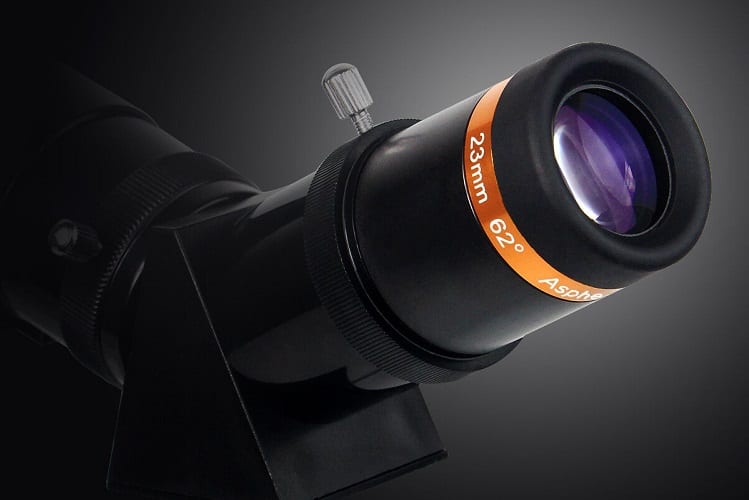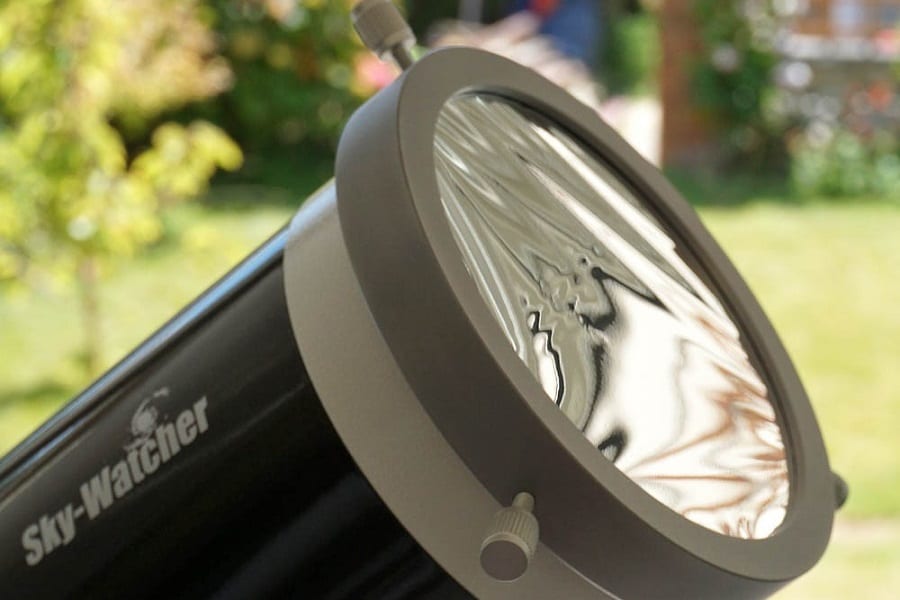You know that you should never look directly at the sun as it can blind you.
But if you want to view the sun, such as during an eclipse, you might wonder if you can make your own solar filter and solar film so that you don’t miss out on getting to see what it looks like.
What is solar film?
Solar film is a roll of sheets, or sometimes loose film sheets, that are made specifically for looking at the sun.
You can use solar film to make your own solar filter that gets placed on your telescope to protect your eyes. However, since looking at the sun is never advisable, you need to proceed with caution. Here’s everything you need to know.
Contents
Tips For Making Solar Filter And Film
You can purchase a solar filter to use on your telescope. These are usually made of glass or polymer film and they block most of the light to prevent your eyes from being damaged.
But, you could make your own filter and even your own film if you feel like that’s something you’d like to do.
This tutorial (via YouTube) offers you versatility because you can use the solar filter you make on your DSLR camera or telescope. It also provides tips on how you can make your own solar film instead of purchasing it.
For making solar film you need
- Solar mylar film (or make your own)
- Can (try to choose a can that will fit around the top of your telescope, but avoid using a ring-pull can.)
- Can opener
- Epoxy
- Scissors
Instructions
- With the use of a can opener, you want to cut out both ends of the can so that you’re left with the body of the can. Make sure there are no sharp edges anywhere on the can.
- Remove the label from the can and clean it properly before using it.
- Mix the epoxy, then take your can and dip one part of the bottom into it. Slowly move it around the epoxy so it will have epoxy all around the edges. It’s a good idea to use a stick or something to spread the epoxy all around it.
- Place the solar mylar film down on a flat surface with its dark side facing you.
- Place the can with the epoxy on it onto the solar film.
- Wait five minutes for the epoxy to dry.
- Once it’s dried, you want to test that you don’t see any light coming through the solar film by holding the can up to a window or other light source.
- When you’re satisfied with it, you can cut away the excess solar film and you’re good to go!
How To Make Your Own DIY Solar Film For Telescope
If you’d prefer to make your own solar film too, you can do so with an empty packet of Lay’s barbecue chips. The reason for this specific flavor is that it has a bag that contains black on it.
This is the part you’ll want to cut out. If you don’t want to use this chip bag, such as because you don’t have it at home, you can choose any other bag that has foil on one side and a black covering on the other.
- Once you have a large enough piece of the bag cut out and laid out in front of you, you can put epoxy glue around one end of the can before placing it glue-first onto the black side of the bag.
- It’s good to try to make sure that the piece of chip bag that you use isn’t crinkly as that could cause the light to sneak through it and you want your DIY solar film to block out all the light.
- Once you’ve tested it and you’re happy with it, you can cut away the excess film around the base of the can.
Not a fan of using the chip bag method?
You can try this DIY solar film method instead:
Use filter sheets, tape, and glue! The filter film is convenient because you can bring it with you where you’ll be viewing the sun, which prevents the filters from being damaged in transit, as Space reports. When you make use of solar film, always ensure that you purchase film that’s been certified for visual use.
Solar film by Baader Planetarium and Thousand Oaks Optical are both safe for visual use. The bonus of Baader’s one is that it’s color-neutral. That means you won’t have to worry about color issues altering your views of the sun.
Pro tip: Always make sure that you use sticky tape so that the solar filter, whether purchased or made at home, remains securely fastened to your telescope. This will prevent it from suddenly detaching while you’re viewing the sun.
Don’t Forget To Measure Your Scope!

When making your own solar filter, you want to be sure that it fits properly on your telescope. If it’s too loose, it can cause light to enter the tube and you certainly don’t want that. Measuring your telescope is important.
- You’ll need to measure the outside diameter of your telescope’s optical tube with a tape measure or ruler. Make sure you measure the widest distance of the telescope.
- Also make sure that you measure your telescope from the outside of the casing on one of its sides across the center and all the way to the outside of the other side’s casing.
Remember: Your solar filter needs to go on the sky end of your telescope – not on the eyepiece end! And, if you’re tempted to make use of an eyepiece sun filter, don’t do it because they are dangerous to use.
These eyepieces used to be included in imported telescope purchases and were made of dark glass mounted in a cell that would screw into the eyepiece.
But the sun’s heat was so concentrated by the telescope that it would cause these filters to shatter, as Sky and Telescope reports. This is why they’re avoided at all costs.
Is It Safe To Use Your Own Solar Film?
You might be a bit apprehensive when using DIY solar film to view the sun through a telescope. That’s why you can take some extra precautions.
- Wear gloves when handling the film so that you don’t ruin it with your fingerprints. You don’t want to look at the sun through a damaged film as that can cause harm to your eyes.
- Always test your solar filter before using it to view the sun. If you look at a light source and it feels too bright or you see a point of light on it, this could mean that it has a tiny hole or other damage in it, so you shouldn’t use it.
- Be careful when straightening out crinkly solar film or foil to ensure that no light can get through its uneven surface. This can cause it to become damaged because you’re stretching it too much! Always be careful when handling solar film.
- When it comes to making your own solar film with foil, such as with the use of a chip bag, you might wonder if that’s safe to use. Foil is used in many DIY sun filter tutorials, such as one by Astro Edu. If you’re worried about using the chip bag, you can always use regular foil.
Related Questions
What will you see when you use a solar filter?
A solar filter shows you the sun’s surface in is white light, but you will see the disk as being orange, pale yellow, or blue. The color depends on the type of filter you use. With a solar filter you can look at the sun without risking your vision.
Can you look at the sun through welder’s glass filters?
These are a safe way to view the sun, provided that they are #12 to #14 shades. You can purchase them from outlets that sell welding supplies.
What are differences between glass and mylar solar filters?
Glass filters show the sun as orange or yellow while Mylar filters show it as blue. This means glass filters have less scattered light, but they don’t reveal contrast between the solar disk and the sun’s bright areas as well as mylar filters do, Sky and Telescope reports.
Conclusion
You don’t have to buy a solar filter for your telescope – you can make your own, but you need to be careful. In this article, we’ve provided you with a step-by-step guide to make your own solar filter without potentially harming your vision.
We’ve also looked at how you can make your own DIY solar film, but since you’ll be using this to view the sun you want to be super-careful, not just when making it but also when handling it.


